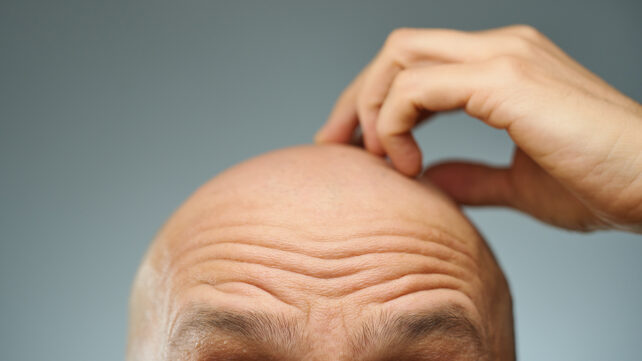There's promising new research to report in efforts to reverse baldness: A new study shows how restorative hair growth can be triggered in mice within 20 days, by stimulating fat cells around hair follicles in the skin.
Led by researchers from the National Taiwan University, the study builds on established knowledge of how skin irritation and injury often trigger hair growth. The team aimed to uncover more about why that happens, and to see if these mechanisms could be harnessed to treat hair loss.
"The bodies of most mammals are covered by a dense hair coat, which serves as the first protective barrier," systems biologist Kang-Yu Tai and colleagues write in their published paper.
"Irritation or injury to the epidermal skin surface, the second body barrier in most mammals, should signal to regrow or reestablish the first protective barrier, the hair."
Related: Surprise Hair Loss Breakthrough: A Sugar Gel Sparks Robust Regrowth
"Although humans have lost dense hair coverage on most of their bodies during evolution, clinical evidence that irritation or injury to skin surface can promote excessive hair growth (i.e., hypertrichosis) suggests that humans preserve this important regenerative capacity."

In the experiments, mice were shaved and then given mild skin injuries using chemical irritants or heat. Hair growth in these damaged areas was then compared against normal skin using a variety of microscopic imaging methods.
This skin irritation caused inflammation, the team found, which caused the deployment of immune cells called macrophages to the scene. Macrophages then signaled to adipocytes (fat cells) to start releasing fatty acids, which were absorbed by hair stem cells, providing the cue to restart hair growth.
"We demonstrate that in this context, adipocyte activation occurs downstream of immune cell-mediated local inflammation in the chain of skin injury-triggered cellular events," write the researchers in their published paper.
Having established the processes, the researchers then tried applying a serum made up of the same fatty acids directly to the skin of mice, to test whether they could bypass injury. That also triggered hair regrowth within around 20 days.
There's a key caveat: The treatment is only effective on hair follicles that are in a resting stage – waiting for the signal to grow again. On the human scalp, baldness typically shifts the lengths of these stages hair by hair – it's more complex than shaving the hair off, as was done with the mice.
Reawakening hair stem cells is an approach to hair loss treatment that's safe, convenient, and relatively quick – even if there are also limitations about how widely the treatment could be applied. The researchers are working towards clinical trials to see if the approach actually translates to humans too.
There's also more to learn about the mechanisms at play when skin gets irritated and how the immune system responds – such as exactly what determines the release of fatty acids being triggered by macrophages.
"Their natural existence and established safety profile suggest considerable potential for treating hair loss conditions in the future," write the researchers.
The research has been published in Cell Metabolism.

